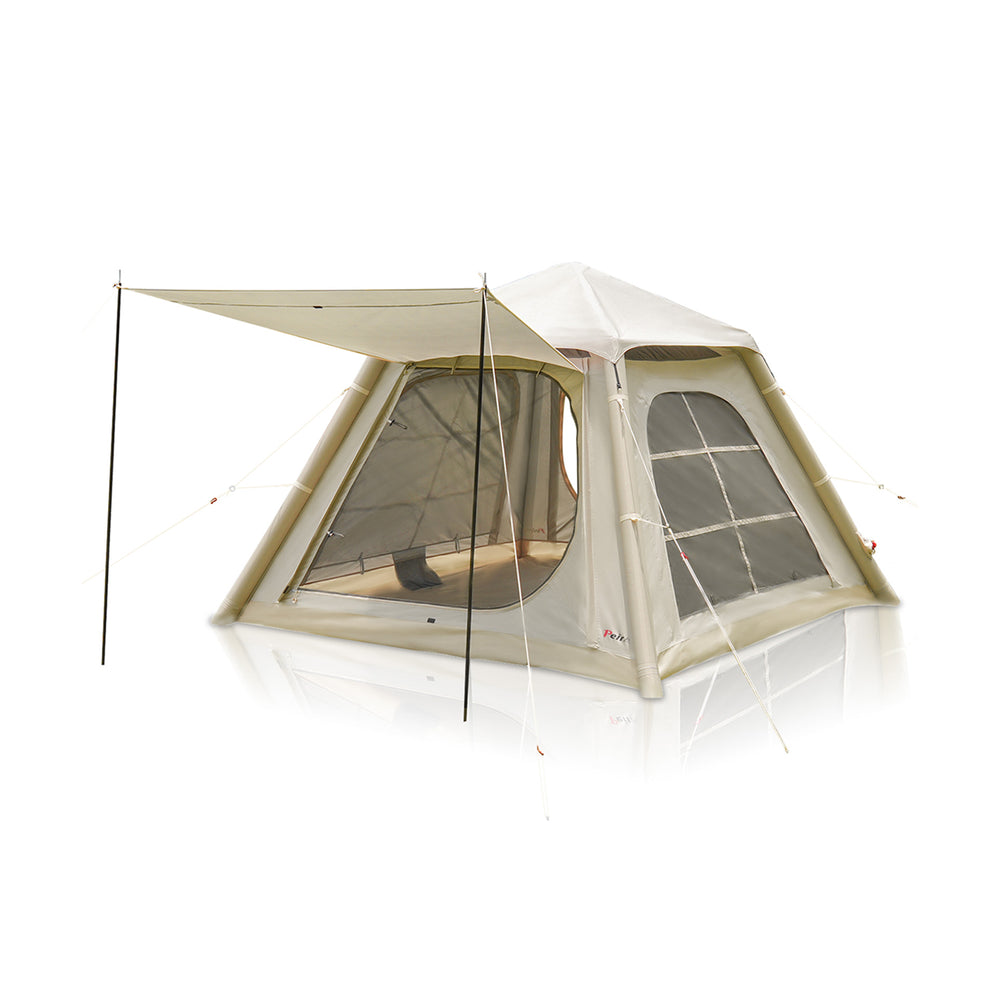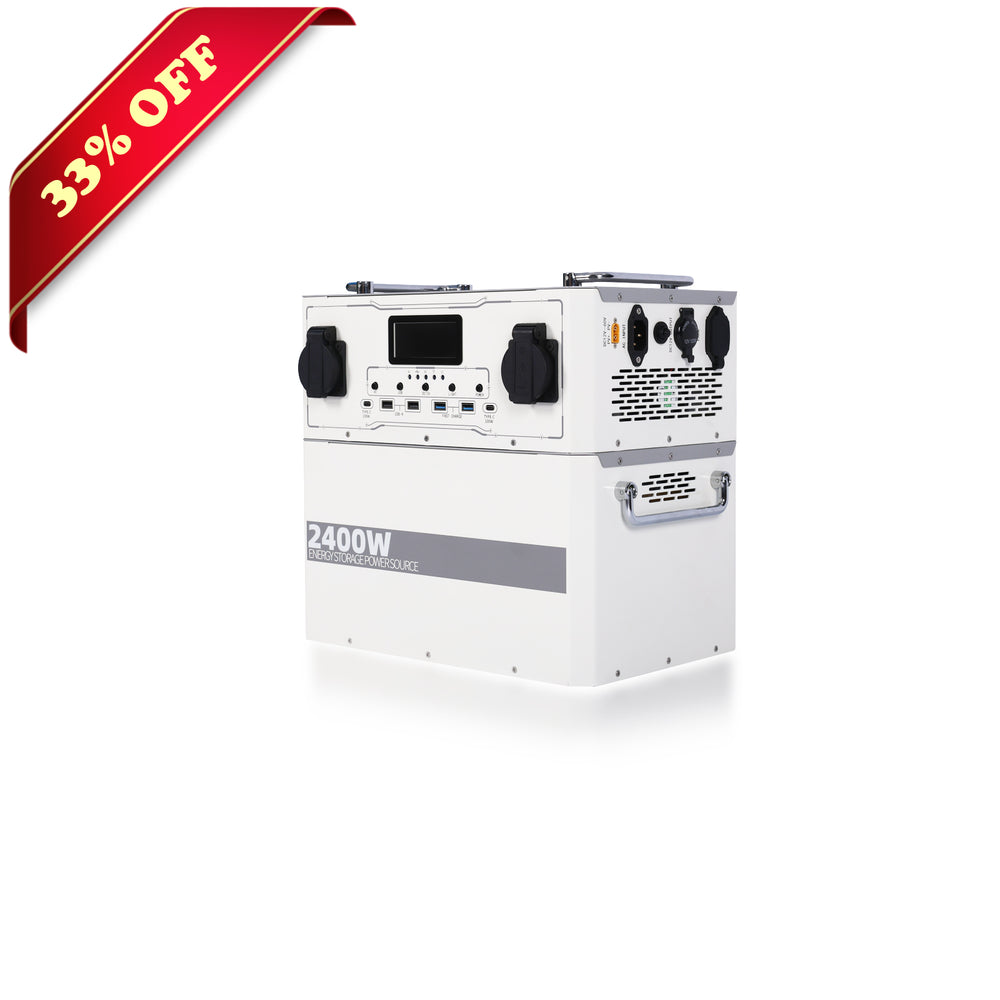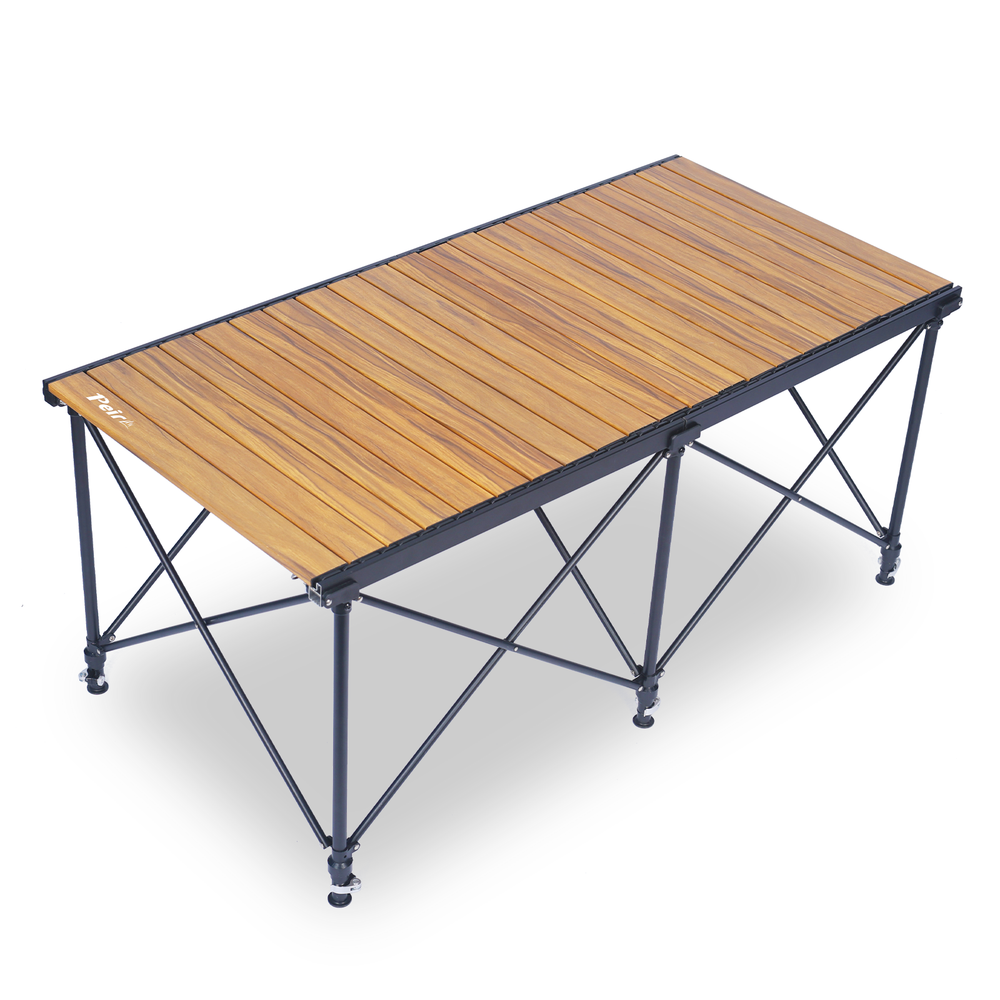If you're gearing up for winter camping—whether you're a mountaineer aiming for a summit or a backcountry snowboarder chasing fresh powder—you know this adventure brings its own unique challenges. As you prepare for snow-covered landscapes and freezing nights, choosing the right winter tent becomes crucial. But with so many options, where do you start? Don’t worry; we’ve put together a guide to help you find the perfect tent for your cold-weather adventure.
Camping in cold climates might sound daunting at first, but for outdoor enthusiasts, it offers some amazing benefits. You won't have to worry about pesky insects, and there's something truly magical about experiencing nature in its quiet, undisturbed state.
Who Needs One?
If you’re not going mountaineering, and you don’t plan to camp during the cold winter months, then you probably don’t need to be shopping for winter tents. Depending on what type of activity you’re doing, you’ll want different features in your winter tent. For example, an alpinist doing a technical climb who has to carry all their belongings will want a pared-down, lightweight tent. Someone who is base-camping or dragging a sled on a backcountry tour will be OK with something a little heavier that affords a few more creature comforts.
Features To Factor
Weight
A single-wall, four-season tent can weigh as little as 3.5 pounds and double-wall tents are often in the 5- to 10-pound range. If you’re glamping, hunting, or setting up a base camp below treeline, a heavy-duty canvas backwoods tent is worth considering. These are great for extended stays or folks seeking major comfort. They’re heavy (you’ll likely need a canoe, a vehicle, or an animal to move them), more expensive, and they take longer to set up, but they’re spacious, comfortable, and typically compatible with wood-burning stoves.
Size and Floor Space
If you’re on an alpine mission or doing something where weight is a concern, you’ll want a two-person tent for two people. If you’re base camping or can afford the extra weight, or are in a super storm-prone area, you’ll appreciate having two people in a three-person tent. During a weeklong storm, the extra elbow room can save your sanity. Even if no storm strikes, it’s nice to have more space to store those bulky, cold-weather layers. Check the square footage, dimensions (especially if you’re tall), and the headroom. Most manufacturers have a diagram so you can see what it would be like with a few people inside. Can you sit up all the way or will your head hit the side of the tent? Having extra headroom when you’re base camping is nice, it can be uncomfortable to wait out a storm if you have to be laying down while in your tent (ultralight tents are often this way, with limited head space).
Doors
Tent entry depends on the door configuration. If there’s one door on the front of the tent then it’s relatively easy for everyone to get in and out. If the one door is on the side, then there’s always someone who has to crawl over everyone in order to go to the bathroom or take their turn digging out from a snowstorm. Doors add weight, so if weight isn’t an issue, then two doors always feels like a luxury. If you’re alpine climbing where weight is an issue, and you’re not going in and out of your tent all the time, then one door is the way.
Vestibule
A vestibule is like the mudroom for your tent. It’s where you take your boots off, drop your pack, and shake off the snow before getting inside your warm, dry tent. Fast-and-light folks may forgo the vestibule (or their tent may not even come with one), but base-camp folks will want a rainfly with a large vestibule––the space between your tent and the fly right outside of the door. If you know you’ll need more storage or space to cook, take a closer look at the shape of the vestibule and make sure it fits your needs. Some tents have two doors and two vestibules, which is nice for extended cold-weather trips and for partners to keep their belongings organized.
Guylines
This is a major feature of four-season tents. Your tent should have reinforced guy-out points (so tent fabric doesn’t tear in a storm). These are loops on the outside of the tent meant for attaching guylines, which are then secured to rocks or stakes in the ground. Securing guylines help keep your tent in place, and when done right, make it so there’s no annoying flapping fabric when it’s super windy. Before you use your tent, set it up and pre-attach your guylines so you're ready to go when setting up in inclement weather. Reflective guy lines are a good idea so no one trips on them at night. If you’re camping on snow, your normal tent stakes won’t cut it. You’ll need special snow stakes, or you can bury stuff sacks full of snow.
Flooring
The waterproof floor wraps up around the bottom of the tent walls a few inches––kind of like a bathtub––in order to keep water out. Bringing a tent footprint is nice, but adds extra weight and is not totally necessary.
Extras
Other features to look out for, depending on your needs, are ceiling loops where you can hang headlamps or wet socks, and pockets at each person’s head to store personal belongings.
Recommend:
Tips And Tricks For Camping In Winter
- The floor of the tent is not enough. You need to add your own insulating layers according to where you are going to sleep. The tent stove can go directly on the ground. However, you need to add a sleeping pad with a high R-value between the ground and your sleeping bags. Throughout the day you can use these pads for sitting or standing on while you cook.
- Don’t leave your hiking boots outside or under the vestibule. Bring them inside and place them close to the tent stove. When you put them on in the morning your feet will be warm and toasty.
- If your sleeping bag is not snug cold air can get trapped in it and you will feel cold when you go to bed. To remove all that extra space for cold air, stuff your bag with your clothes till it has just the right amount of space.
- Change your clothes before getting into your sleeping bag. You will have sweated in your clothes all day and now that dampness is going to feel chilly. Wear clean and dry clothes to bed.
- Place your water bottle upside down and make sure it is not full to the brim. Water starts freezing from the top. If your bottle is upside down, the water near the mouth of the bottle will not be frozen and you can still drink it without waiting for the ice to melt.
- Eat even if you are not hungry and think you can do with skipping a meal. The body creates heat when you digest food.
- It can be a hassle to get out of your warm sleeping bag and use the communal restroom on the campsite. Keep a bottle inside the tent for when you need to pee at night. This is another reason for investing in a spacious winter tent.
What is the difference between a 4 season tent and a winter tent?
A four-season tent and a winter tent are the same thing.
They are designed to be stronger to withstand heavy snowfall (like the kind that completely buries a tent) and fierce wind. Additionally, the walls are thicker, allowing them to retain heat and be warmer. These are heavier to carry but provide the necessary safety structure to keep you alive through the night or a severe storm.
How do you keep a tent warm on a cold night?
There are a few ways to help keep your tent warm on a cold night.
The first is to line your tent with unworn clothes. This will decrease the amount of cold air that seeps up from the ground.You can put a tarp or heavier emergency blanket inside your tent (or under it) to add one more layer between you and the cold snow/ground below. If you use the emergency blanket/tap, it has a reflecting side that should help keep your tent warmer at night.
Freestanding or Semi Freestanding Tent
Freestanding Tents: Quick and Convenient Shelter Freestanding tents are a winter camper’s best friend because they are designed to stand on their own without relying on stakes or guy lines for support.
Their self-supporting frame system typically involves a combination of sturdy poles that create a freestanding structure. This design makes them ideal for quick setups, allowing you to pitch your tent swiftly and efficiently even in challenging winter conditions.
The convenience of freestanding tents shines in various terrains, especially where staking into the frozen ground might be impractical, such as rocky or hard surfaces. The ability to set up without relying on stakes can be a game-changer in unpredictable winter environments.
Semi-Freestanding Tents: Stability and Versatility If you’re seeking a balance between stability and versatility, a semi-freestanding tent might be the perfect fit for your winter camping needs. Like their freestanding counterparts, semi-freestanding tents have a self-supporting frame. However, they may require stakes and guy lines for optimal stability and to maximize internal space.
Semi-freestanding tents often combine poles and guylines to create a more stable structure, especially in windy winter conditions. While they may require a bit more effort to set up than freestanding tents, the added stability can be crucial when facing the challenges of winter weather.Ideally, you should aim for a freestanding tent for your winter camping.
Winter camping hacks
When choosing your camping spot, look for anything that can act as a windbreaker. Below the tree line, bushes and branches will work just fine but higher up, you can only hope for snow and rock. Digging in or building a snow wall will help protect your shelter.
Create a flat and hard platform by stomping on the snow to pack it down. If you have one, use a tarp. Set up at least one door of your tent away from the wind and pitch it neatly, spreading it to its full size. To pin it down, tie your cord strings around the tent pegs and bury them horizontally two inches under well-packed snow. You will have to wait 15-30 minutes for the snow to freeze and anchor the pegs before they can be used to tension your tent.
Staying warm in winter is easy with the right gear, but if your sleeping bag is not as warm as you’d like, you can make yourself more comfortable by using down booties or placing a hot water bottle in the bag.Last but not least, pack an empty, wide necked flask. The last thing you want to do in a snowstorm is leave your cozy shelter in the middle of the night.
FAQs
What should I look for in a winter tent?
When choosing a winter tent, prioritize durability, insulation, and weather resistance. Look for a tent with a strong frame, such as aluminum or composite poles, to withstand heavy snow and strong winds. Ensure the fabric is tough, preferably ripstop nylon or polyester, with a high waterproof rating. Ventilation is also key to prevent condensation buildup, so make sure there are adequate vents. A tent with a full-coverage rainfly and a vestibule for gear storage is ideal.
How many seasons should a winter tent be rated for?
For winter camping, a 4-season tent is your best bet. These tents are specifically designed to handle harsh conditions, including snow and strong winds. They are built to keep you warm and protected in freezing temperatures. Avoid using 3-season tents in winter, as they are not designed for extreme cold or heavy snow loads.
Is a single-wall or double-wall tent better for winter camping?
Both single-wall and double-wall tents have their pros and cons. Single-wall tents are lighter and easier to set up, making them a good choice if you're concerned about weight. However, they tend to have less ventilation, which can lead to condensation issues. Double-wall tents, on the other hand, have an inner tent and a separate rainfly, providing better insulation and reducing condensation. They are generally more versatile and comfortable for winter camping.
How important is the tent’s weight for winter camping?
Weight is always a consideration, but for winter camping, it’s important to balance weight with durability and comfort. Winter tents are typically heavier due to their reinforced materials and additional features. If you plan to hike long distances, aim for a tent that offers the best compromise between weight and sturdiness. Remember, the extra weight can be worth it if it means better protection from the elements.
Should I consider a tent with a built-in stove jack?
If you're camping in extremely cold conditions, a tent with a built-in stove jack can be a game-changer. It allows you to use a wood stove inside the tent, providing warmth and a place to dry out gear. However, these tents are typically heavier and require careful use to avoid fire hazards. If you often camp in sub-zero temperatures, it might be worth the investment.
How do I keep warm inside a winter tent?
Start with a well-insulated tent and use a high-quality sleeping bag rated for cold temperatures. Adding a sleeping pad with good R-value (insulation) is crucial, as it provides a barrier between you and the cold ground. Layering your clothing and using a liner in your sleeping bag can also help retain heat. If you’re in extreme conditions, consider using a portable heater or a stove with a jack, but ensure proper ventilation to prevent carbon monoxide buildup.
Are there any special tips for setting up a winter tent?
When setting up a winter tent, choose a location that's sheltered from the wind, ideally on level ground. Pack down the snow to create a solid base for your tent and use snow stakes or bury regular stakes horizontally for better hold. Avoid setting up too close to a slope where snow could avalanche. Once your tent is up, secure all guy lines tightly, as wind can pick up unexpectedly.












 Peirhw Inflatable House Tent - Starry Night Love
Peirhw Inflatable House Tent - Starry Night Love
 Peirhw Glamping Tents - Friendship Castle
Peirhw Glamping Tents - Friendship Castle
 Peirhw Inflatable Canopy Tent - Adventurer
Peirhw Inflatable Canopy Tent - Adventurer



 Peirhw Portable Air Conditioner
Peirhw Portable Air Conditioner
 【Advance Sale】Peirhw Portable Power Station 2400W
【Advance Sale】Peirhw Portable Power Station 2400W
 【Advance Sale】Peirhw Portable Power Station 600W
【Advance Sale】Peirhw Portable Power Station 600W




 Peirhw Self Inflating Sleeping Pad
Peirhw Self Inflating Sleeping Pad
 Peirhw Air Mattress (8" Queen Type)
Peirhw Air Mattress (8" Queen Type)
 Peirhw Camping Sleeping Bag
Peirhw Camping Sleeping Bag


 Peirhw Butterfly-shaped Canopy for Camping
Peirhw Butterfly-shaped Canopy for Camping
 Peirhw Camping Waterproof Canopy (Cannot be Purchased Separately)
Peirhw Camping Waterproof Canopy (Cannot be Purchased Separately)


 Peirhw Outdoor Folding Chairs
Peirhw Outdoor Folding Chairs
 Peirhw Folding Camping Table
Peirhw Folding Camping Table












